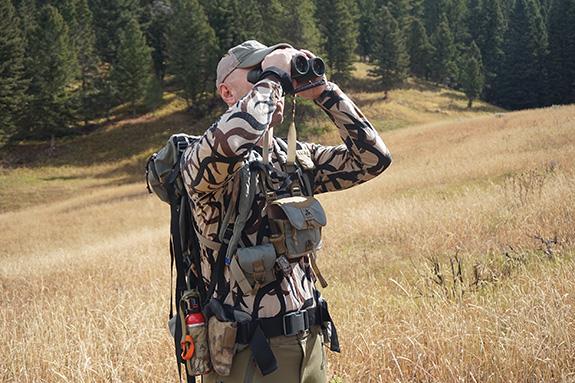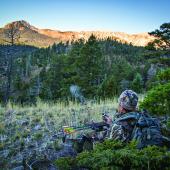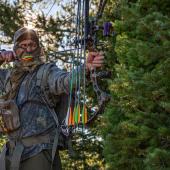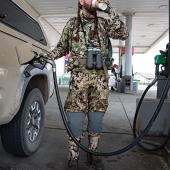Strings of Fortune
Prepping for a successful season.
Just over four miles from the truck by foot and headlamp, we stashed our pack frames in a downed aspen. Another two miles and 2,000 vertical feet put my hunting partner and me in position. Light started to spill over the west side of Gallatin Canyon. The fog lifted and revealed the steep, dark drainage below us. Our arrows nocked and bows in hand, I pulled out my call and shattered the morning silence. I sent three cow calls echoing through the thick draw. Nothing. A few minutes went by and we shuffled 60 yards down the hillside. I let out one more call, and our hearts stopped as the timber erupted with the dragon-like scream of a bull elk.
Bow-hunting elk in the high country of Montana has to be one of the most thrilling, exhausting, and rewarding activities an outdoorsman can partake in. But only the luckiest few can pull off a successful hunt without proper preparation and planning—much of which begins well before the season. Here are a few tips for upping your odds come fall.
Fitness
Private land notwithstanding, most Montana elk live in rough terrain; being in good physical condition makes it much easier to reach these areas during the hunt. Trail running, hiking, and mountain biking during the summer are great ways to increase your stamina for fall. Carry a heavy pack up the M a few times. Remember, hunting is the fun part—packing out your game is where you’ll really test your fitness level.
Clothing
Montana is known for sporadic weather—quality clothing is a must. Shop early and test everything out on your scouting trips, so there are no unpleasant surprises come September. Merino wool wicks sweat away from your body, keeping you dry and comfortable. You’ll be on your feet a lot, and being soaked in sweat when the temperature drops is a surefire way to develop hypothermia. With all the walking and hiking, a good pair of lightweight hiking boots can make your hunt more enjoyable. Quality boots paired with a good set of wool socks will help you avoid blisters. To top off the list, a set of lightweight, packable raingear should never be left at the truck.
Gear
This is one area where I have no budget. Nothing is worse than having everything come together and your gear fail. When people come into our pro shop, I encourage them to buy the absolute best they can afford. But no matter how good your gear is, a bow is only as good as the person shooting it.
Hunting packs these days are compact and designed to distribute weight evenly, making them more comfortable than ever. My pack is filled with a water bladder, high-calorie snacks, game bags, knives for processing game, paracord, a GPS, rain gear, a headlamp, and some electrical tape. I carry either a sidearm or a can of bear spray with me at all times as bear attacks happen every year.
Marksmanship
Practice, practice, practice. When you’re done, practice some more. You owe it to the animal you’re hunting to make a clean, lethal shot. There are few worse feelings in the world than failing to recover a wounded animal. A well-tuned bow with sharp broadheads will do the trick.
Scouting
Bow-hunting in Montana is something every hunter should experience. The vast land and millions of acres of public hunting ground make it easy to get out there. You will develop a sense of respect for the animals that thrive in these conditions and call this place home. Whether you are setting the hook on a silver king or settling your 30-yard pin on the herd bull, being prepared will always increase your chances of success.












